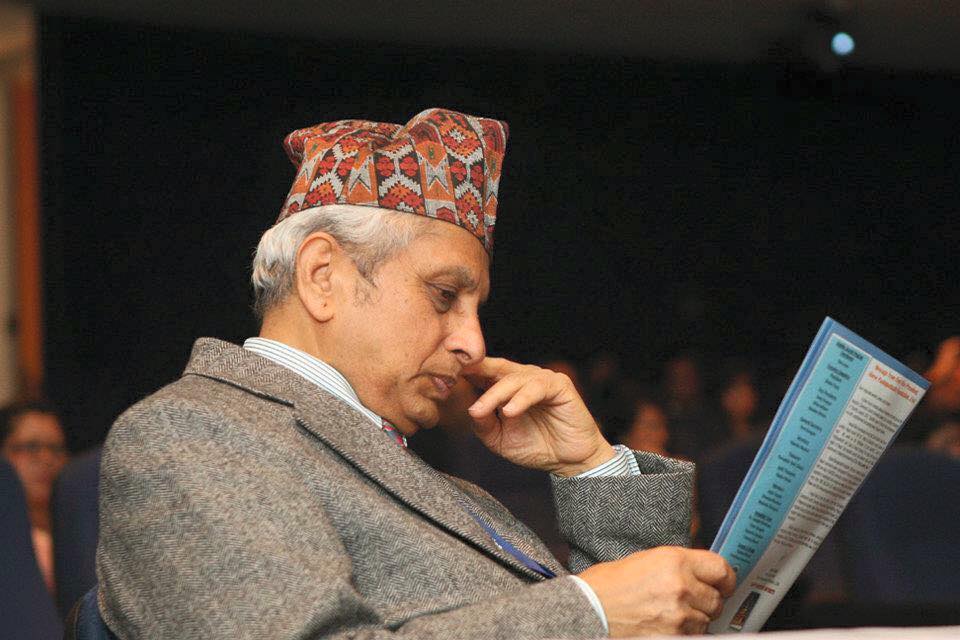

I am against Topi Diwas on which the Topi is worn to instill pride in our culture for one day. Let me explain why. It’s not that I am against Nepali Topi. In fact, I love the Nepali Topi: I have a good collection of about two dozen of them—from Bhadgaule to Dhaka ko Topi. That distinctive cap is part of Nepali heritage. You have to include it if you wear a Daura Suruwal. Your outfit would look incomplete if you did not wear a Topi. But my objection to the Topi Diwas stems from the simple fact that it has just become a damn Photo Diwas, a sort of fashion parade. What is accomplished by just donning a cap and taking a picture of yourself and posting it on Facebook?
Nothing, Zero, Nada, Zilch.
If the Topi Diwas had been associated with doing something good for the local community or for the larger society, I would be all for it. Sign me on by making me a paying member of the Topi Diwas organization, if there is one. But right now, it’s ridiculous that people are wasting their time posing for a picture and posting it on Facebook. What purpose does it accomplish? Again, the answer is, and I repeat—Nothing, Zero, Nada, Zilch.
Then, why do it?
There are many social problems in Nepal: hunger, poor health, trash, air and water pollution, traffic congestion, not to mention human trafficking, artifacts trafficking. The list goes on. If wearing the Topi Diwas were associated with an effort to address any of these issues, I would consider it a privilege to don a Topi, whether it was to go out to clean the street or distribute food to the poor or rescue sick and abandoned animals in the street. That would be worth identifying oneself by wearing the Topi. And you could then wear your Topi proudly. But don’t show me a photo of you wearing your Topi but doing nothing of social value.
Just by wearing a Topi once every year one doesn’t become Nepali. One has to have love and respect for the country in one’s heart. I am reminded of a song from an old Hindi movie Shree 420—Mera jutta hai Japani, ye pataloon Englishtani, sar pe lal topi Rusi, phir bhi dil hai Hindustani.
Today that lyrics should be changed to “Everything I wear is Chinese, but still I am Indian.”
I know Topi is a unique part of Nepali identity. Sometimes, a Nepali can be mistaken for an Indian, a Chinese, a Mediterranean or a Hispanic. In 1972, I arrived in the U.S. as a graduate student. When I attempted to rent an apartment in Los Angeles, I was taken to be an Italian by my landlord not because I lied to her that I was from Italy, but because I told her that I was from Nepal. She told me, “Ah, you are from Naples. My parents are from Naples.” She rented me the apartment; I am glad that she didn’t ask me questions in Italian.
One of my relatives who came to Southern California commented—after visiting a Mexican market—that he was happy to see so many Nepalis in California. He was referring to the Mexicans he saw in the market.
If I am in a crowd wearing a Nepali Topi, I stand out because of the unique identity it gives me. The Topi has its place. We wear it during religious ceremonies, festivals and special occasions such as wedding and National Day. Let us not lower its status to a day that has no meaning and no purpose. Topi Diwas should be abolished and in its place a new day called Seva Diwas (Service Day) should be instituted.
I understand the reason behind the movement. The movement was started when the newly elected Communist government published its ideals in 2013. Those ideals removed Daura Suruwal, Topi and Gunyu Cholo from the list of items that were part of one’s national dress. In response, concerned citizens came together to start a movement for the purpose of preserving the national dress. That’s a noble mission, indeed. However, wearing a Topi once a year isn’t enough to bring about change on a national scale. Lobbying politicians, organizing activities such as I mentioned above and publicizing the value of these social improvement efforts with a media blitz to the public—this kind of publicity has value. Using the Topi to connect one’s identity with such social efforts would be an important reason to wear it. Jai Nepal, Jai Topi.
Comment